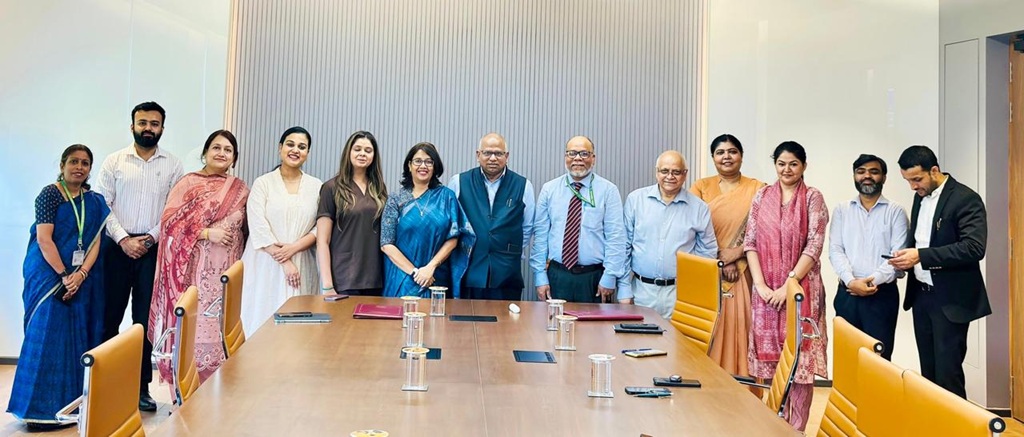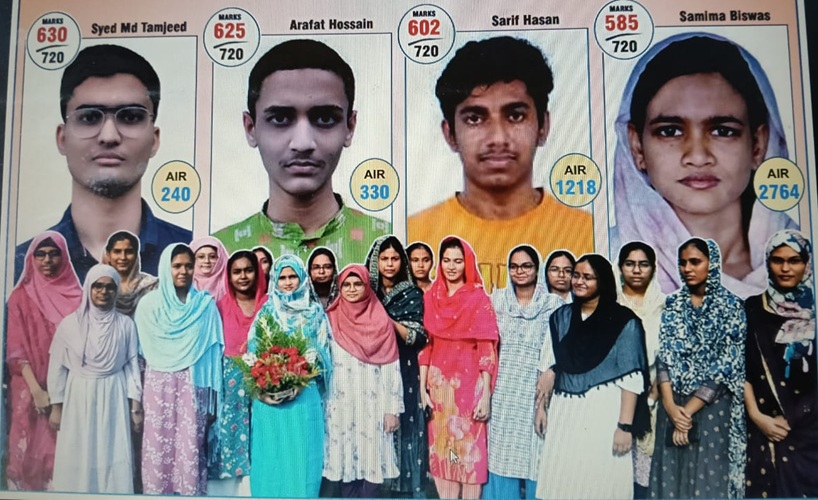By Tameemuddin Humble for Maeeshat
“The Chief Minister’s Scholarship Program is meant to promote girls’ education, but sometimes students belonging to the poor families are forced to use it for their non-educational purposes”, said the Headmistress of Urdu Girls High School, Mujahida Haq. “Students’ money, allotted by the Government under Mukhyamantri Balika Poshak Yojana, Mukhyamantri Balika Cycle Yojana and Mukhyamantri scholarship program to the students of 9th & 10th class, are much awaited by the parents than the students her-selves”, she opined.
She receives dozens of calls, as to when it was to be disbursed. Even the nominal amount of few hundred rupees annually, charged by the school in the name of development and miscellaneous expenses, is being paid by some of the students after receiving this few thousand rupees in a year by the state government.
Dr Prem Kumar, Former Minister, Govternment of Bihar and BJP MLA, Gaya Assembly constituency, distributed Rs. 5,31,000/- to the 124 students of class IX @Rs.2500/- for cycle and to the 97 students of class X @Rs.1000/- for Poshak (dress) of the financial year 2014-15.
Dr Kumar allotted a deep well hand pump to the school from his development fund and promised to look into the possibilities to establish a library in the school. In the past, he has also given the fund to develop the infrastructure of the school.
“Urdu Girls High School Gaya”, a Bihar Government aided minority secondary school is the only Government minority girls’ high school in Magadh Division which celebrated its Golden Jubilee last year in March, taking vow of development by the new management committee.
Since then the school has taken a new shape and created almost a thousand square foot space for the students. It is running in a rented house though Jeetan Ram Manjhi, Ex Chief Minister of Bihar, promised to arrange a land, while addressing the Golden Jubilee program. As of now, not only the school is devoid of the basic infrastructure but needed even the basic amenities such as the separate toilets for the male and female staffs.
The School did not have its own land and was running from a building constructed on the wakf land, though built by its own resources, dedicated to the another 100 year old institution—Madarsa Anwarul Uloom, one of the oldest institutions of Bihar which spared a small portion of land 50 years ago for the school till the institution imparts education in Urdu language.
Urdu Girls High School Gaya, one of the first schools for girls belonging to the linguistic minorities in Bihar.
The disparity of Muslim girls’ education with the rest of the girls’ in the area was felt by the then group Muslim intellectuals of the city and held several meetings in 1963 at the residence of the late M Zafir Alam, the nephew of the famous satirical writer of India, the late Anjum Manpuri. The prominent personalities of the city who came along with the founder were the late Nawab syed Ahmed Sayeed Quadri, late Ibrar Ahmed Advocate, Late Md Idris Alam, Late Syed Ali Hyder Warsi and Mr Abdus Salaam Khan.
Over the six decades after Independence, the Muslim female literacy rate is 50.3% in India while the national female literacy rate is 65.46%. If we compare this with the other minorities’ women, it is 76% literacy among Christians, 64% among Sikhs, 62% among Buddhists and a whopping 90% among Jain women!
In comparison, 20% Hindus and 31% Christians pursue higher education (technical, vocational and professional courses at secondary and post-secondary levels), only 11% Muslims are enrolled in higher education while at national level it is 18.8% according to the report based on the National Sample Survey (2009-10) data, compiled by the union ministry of human resource and development. The situation is worse in rural India – only 6.7% Muslims take up higher education.
The role of “Urdu Girls High School, Gaya” in meeting the challenge of this disparity in this area is laudable as around 2500 girl students, mostly from poor background, got their secondary level education from this institution in the last 50 years. In Bihar, girls score more than boys. But the state of the Muslim girl child in the area is such that no single institution – be it government or private – can bring about lasting change. What is needed is an ideal mix between non-governmental organizations, local community and the government.
The dropout rate of the girl child is to be checked besides providing the quality education at the primary level. The said school after its establishment was the alternative to the famous convent school of the area—Nazareth Academy for the first few decades particularly for the Muslim girls because of the quality education that the then a number of Muslim girl students joined this school after leaving their convent schools. This phenomenon continued till 1980s but later due to the popularity of the English-medium schools, the community segment that affords began to lose its interest in Urdu-medium schools and strictness for the Muslim culture in schooling as well as to give their children better admission opportunities for higher education.
The government usually takes interest in the popular schemes to the extent of policy announcement only and more so keeping it be compensated politically but it is the action research by the civil society that could make a difference. The main objective of this financial aid by the government is that students particularly girls should continue their education and must not drop out due to financial problems. But to the social segments it is meant for is struggling for the basic livelihood. We need the holistic approach towards the welfare schemes.
Sachar Committee Report says, “While the education system appears to have given up on Muslim girls, the girls themselves have not given up on education. There is a strong desire and enthusiasm for education.”
The school aims to streamline the desire of education among the girls, particularly of the poor background in the area, motivating them to pursue their education, by organizing this Golden Jubilee.
The secretary Dr M H Khan welcomed the Chief Guest, Dr Prem Kumar, and apprised the audience of what was done in the last one year, regarding infrastructure and other works. Izhar proposed the vote of thanks. TD Humble and Mushtaque of the managing committee were also present at the function.
(Tameemuddin Humble, social activist cum writer and is founder of an NGO “Movement for Economic Society, can be contacted at tameemhumble@gmail.com)







0 Comments